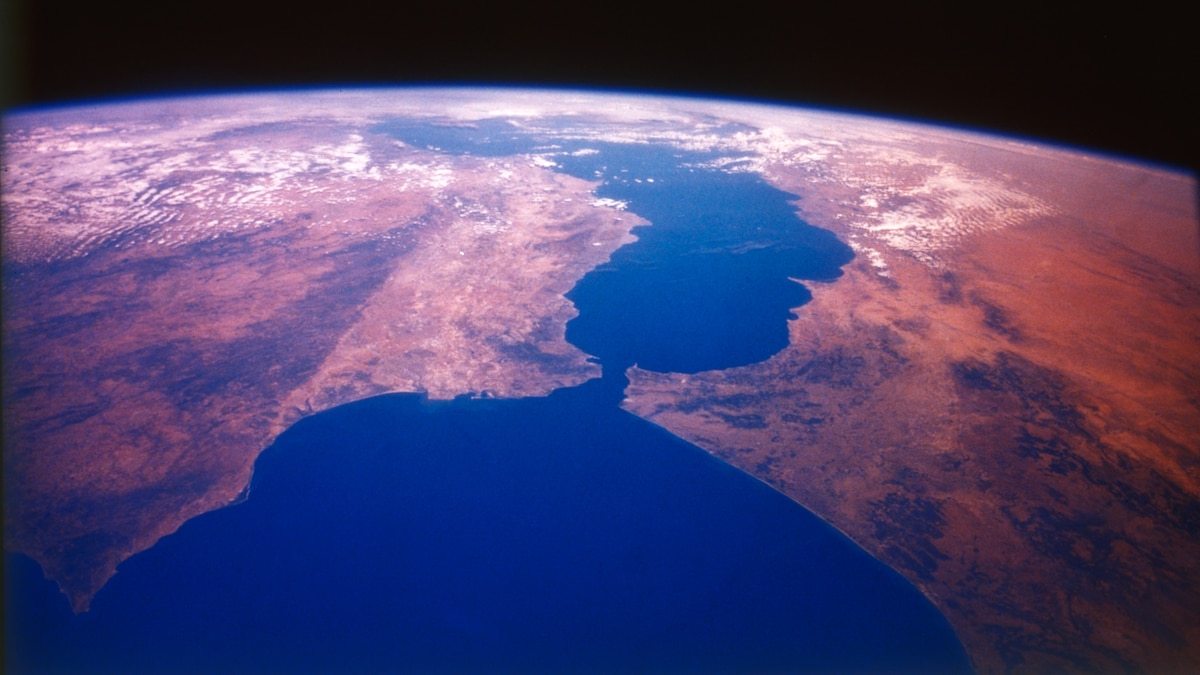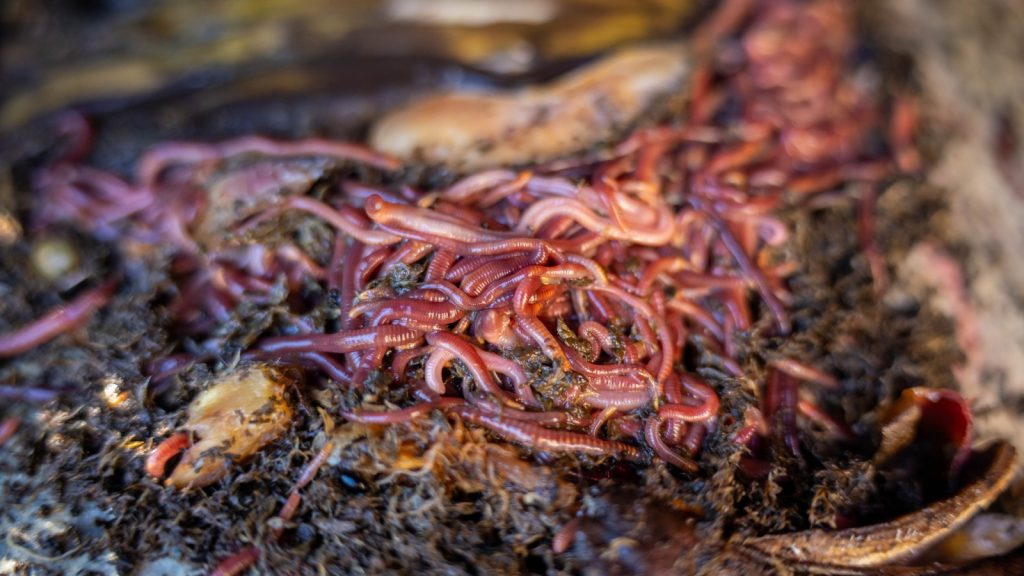Now Reading: How the biggest flood in the history of the Earth created the Mediterranean
-
01
How the biggest flood in the history of the Earth created the Mediterranean
How the biggest flood in the history of the Earth created the Mediterranean

Six million years ago, the Mediterranean Sea wasn’t nearly as picturesque as it is today. It was barely even a sea; tectonic activity had raised a mountain range in the Strait of Gibraltar, cutting off the Mediterranean from the Atlantic. Without a constant inflow of water the sea evaporated under the baking sun, and all that remained were a few scattered, briny lakes surrounded by mile after mile of salt and gypsum. Today, scientists call this the Messinian Salinity Crisis: in the dying days of the Miocene epoch, most of the Mediterranean died.
But if, on a certain day about 5.3 million years ago, you happened to go for a stroll along that mountain range, you might have discovered something odd: a trickle of water, making its way down one of the mountains from the Atlantic ocean beyond it. The mountains had been slowly sinking until their summits were level with the ocean’s surface; one day, the mountains sank just enough for some of the water to spill over their edges.
Once they did, the water carved an unstoppable path downhill. The trickle turned into a stream, which widened into a river, and soon the ocean was pouring into the desiccated Mediterranean basin with the force of a thousand Amazon Rivers, suddenly ending the 600,000-year-long dry spell.
The water moved so quickly — 32 meters per second, or about 72 miles per hour, by the time it hit the coast of modern-day Sicily — that it dragged the air behind it, creating tropical storm-force winds as it moved. If you managed to somehow see through all the muddy sediment stirred up by the flood waters, you might have found a few surprised fish in the depths, stunned or struck dead outright by the force of the rapids that carried them in from the Atlantic. As the water refilled the Mediterranean, it ushered in a new geological era: the Zanclean.
“I don’t think any human has ever seen anything like this,” says Aaron Micallef, a National Geographic Explorer and marine geoscientist at the Monterey Bay Aquarium Research Institute who studies this event, called the Zanclean megaflood. Micallef and his colleagues have spent years putting together the puzzle pieces of what the flood looked like, and this story is largely built on their research, which melds geologic evidence with computer modeling. While evidence for the flood is still accumulating, this is the scientist’s best picture yet of what’s likely the largest flood in the history of the Earth.
A 3D rendering depicts how the Zanclean flood may have progressed.
InTheBox/Daniel García-Castellanos
How the modern Mediterranean was formed
Micallef and his colleagues found that the Mediterranean, which had been obliterated once when the sea dried up, was transformed completely again by the megaflood.
The fossil record is difficult to read in much detail, but scientists think that before the sea dried up it was filled with all kinds of creatures, from ancient sharks and pinnipeds to fish and a rainbow of coral. Only eighty-six of the 780 or so species from the sea that existed before the salinity crisis have survived into the modern-day Mediterranean, and the fact that they lived through the flood is a minor miracle. Those creatures, a collection of mollusks, plankton, and one standout sea slug, most likely survived by finding refuge in the few patches of water that remained after the sea dried up.
(Rome is teeming with mysterious crypts filled with popes—and secrets)
As the water poured in, the western Mediterranean began refilling at a tremendous rate; Micallef estimates the water flowed at a rate of somewhere between 68 and 100 million cubic meters per second, filling the sea by as much as ten meters, or nearly 33 feet, each day. The weight of the rising waters pressed down on the Earth’s crust, making it slide across the molten mantle underneath. This, says Daniel Garcia-Castellanos, a Geophysicist at CSIC Barcelona and a pioneer on research into the Zanclean megaflood, would have triggered earthquakes that rippled through the region. For the goat-antelope creature Myotragus, which had walked across the dry sea to make its home on modern-day Mallorca and Menorca, the earthquakes, water, and wind combined must have sounded like the roar of a monstrous predator — surely, this was the end of the world as they knew it.
This video animates the evolution, and end, of the Messinian salinity crisis.
University of Malta/Aaron Micallef, D. Garcia-Castellanos, and A. Camerlenghi.
Eventually, the rising waters streamed over the lip of Sicily, and as the current moved east it ate away at the land, leaving behind hundreds of long ridges as if a giant hand had clawed through the dirt. A little bit further east, the water hit another wall that we now call the Malta Escarpment. This barrier divided the Mediterranean into west and east, turning the western mediterranean into a giant bowl: for the water to make its way east, it first had to fill the western half of the sea.
Once the western half of the sea filled up enough for the water to make its way over the top of the wall, it tipped over into the east and down a cliff about 1.5 kilometers deep, creating the largest waterfall in the history of our planet; imagine the Niagara Falls, but 30 times taller. The crash of the water triggered more earthquakes, and the flood dumped mounds of sediment at the bottom of the sea as it rushed into the east.
You May Also Like
As the water rose in the east to meet the waters of the western Mediterranean, the earth stopped shaking. The wind died down. The water started clearing as it settled, sediment falling to the sea floor. Somewhere between two and sixteen years after the first waters broke through the Strait of Gibraltar — not even the blink of an eye in geological time — the Mediterranean leveled off with the Atlantic.
Life returned… eventually
From the surface, all signs of upheaval disappeared. The Atlantic flowed lazily into the newly reformed Mediterranean, which was now free of walls or waterfalls. This sea, with its comparatively mild waters, looked much as it would millions of years later, when ancient Greece and Rome established themselves on its edges, When the Greek poet Homer wrote of the sea monsters Scylla and Charybdis living off the coast of Sicily, he had no way of knowing that Charybdis, who often takes the form of a whirlpool pulling unfortunate sailors to their death in the depths, had already been upstaged by the sea’s own history.
It would take surprisingly long for any new sea creatures, monstrous or otherwise, to make a home in the Mediterranean.
“In geological terms, we should have been seeing marine fauna immediately, but that’s not what is happening,” Konstantina Agiadi, a geologist at the University of Vienna who co-authored a paper on the impact of the salinity crisis and flood on marine biodiversity. The water in the immediate aftermath of the flooding would have made a poor home, devoid of nutrients and far too salty for most creatures to live in; the ones that existed in the sea before the flood struggled by for a few millennia before the water became hospitable enough for any potential newcomers, and even today the Mediterranean is considerably saltier than the Atlantic. “It took a lot of time for the situation to settle enough for organisms that were coming from the Atlantic to actually establish healthy populations and grow,” Agiadi said.Today, the sea is a biodiversity hotspot, filled with all varieties of sea creatures.
(How archaeologists found one of the oldest cities on Earth)
Even though the flood happened millions of years ago, Micallef says, it holds important clues about the future of our planet. Climate change is making flooding from melting glaciers more common, and understanding the dynamics of the Zanclean megaflood — even though it was much larger than anything we have seen from glaciers so far — can help us model what future flooding will look like, mapping both the flow of water and its effect on the landscape around it.
And, says Agiadi, there’s another important lesson too: The world transformed when the Messinian Salinity Crisis and Zanclean megaflood happened, and there was no going back. The creatures that live in the Mediterranean now, wonderful as they may be, are nothing like what lived there before it dried up. That’s true of climate change too.
“The flood is kind of like a natural experiment,” Agiadi says. “The Mediterranean, after the flooding, eventually became a marine basin that is a biodiversity hotspot today. But it never became, even after millions of years, what it was before. So it’s kind of a natural test of if we can fix things. If you try to bring back a species without fixing the underlying problems, it will never be okay. But it might be something different.”
The nonprofit National Geographic Society, committed to illuminating and protecting the wonder of our world, funded Explorer Aaron Micallef’s work. Learn more about the Society’s support of Explorers.























